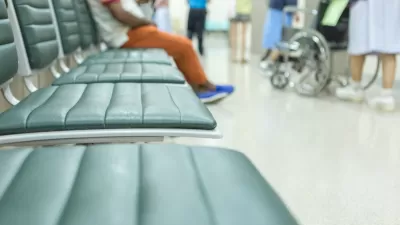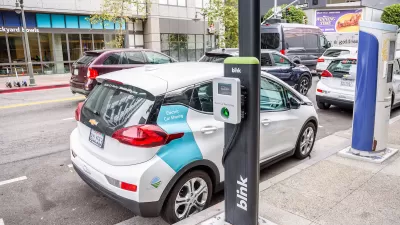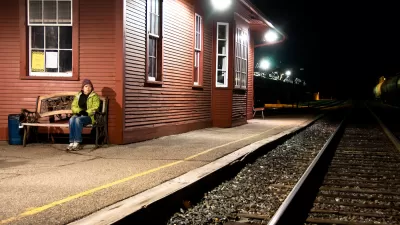Streetsblog calls attention to the lack of representation of women, people of color, and other groups in state departments of transportation that are largely dominated by white men.

High-ranking officials at state departments of transportation are much more likely to be male and white, according to data from the American Association of State Highway and Transportation Officials.
Two states — Wyoming and Nebraska — had no female executives, while all but seven states had more than 50 percent male executives. And in 11 states, including Georgia, Oklahoma, and Pennsylvania, 100 percent of executives identified as white.
According to the Streetsblog USA staff, this is troubling because the makeup of these agencies doesn’t reflect the populations they serve. “Because federal road funding largely flows through their offices, state-level decision makers have a massive influence over, for instance, which neighborhoods are targeted for demolition to make way for highway projects and which are left untouched — and needless to say, Black, brown, and low-income communities have historically (and presently) been the ones that get bulldozed the most.”
The article points out that women, people of color, nonbinary people, people with disabilities, and other underrepresented groups have different and unique needs when it comes to transportation, mobility, and safety. “As an absolute bare minimum, though, it's essential to ask why marginalized people so often aren't in the room when state DOTs make decisions to represent their own needs— and what impact their absence is having on all of our communities.”
To address similar issues, the Washington state legislature is considering a bill that would give transit riders direct representation on transit board.
FULL STORY: Data: State DOTs Look Nothing Like the Residents They Serve

Planetizen Federal Action Tracker
A weekly monitor of how Trump’s orders and actions are impacting planners and planning in America.

Map: Where Senate Republicans Want to Sell Your Public Lands
For public land advocates, the Senate Republicans’ proposal to sell millions of acres of public land in the West is “the biggest fight of their careers.”

Restaurant Patios Were a Pandemic Win — Why Were They so Hard to Keep?
Social distancing requirements and changes in travel patterns prompted cities to pilot new uses for street and sidewalk space. Then it got complicated.

Platform Pilsner: Vancouver Transit Agency Releases... a Beer?
TransLink will receive a portion of every sale of the four-pack.

Toronto Weighs Cheaper Transit, Parking Hikes for Major Events
Special event rates would take effect during large festivals, sports games and concerts to ‘discourage driving, manage congestion and free up space for transit.”

Berlin to Consider Car-Free Zone Larger Than Manhattan
The area bound by the 22-mile Ringbahn would still allow 12 uses of a private automobile per year per person, and several other exemptions.
Urban Design for Planners 1: Software Tools
This six-course series explores essential urban design concepts using open source software and equips planners with the tools they need to participate fully in the urban design process.
Planning for Universal Design
Learn the tools for implementing Universal Design in planning regulations.
Heyer Gruel & Associates PA
JM Goldson LLC
Custer County Colorado
City of Camden Redevelopment Agency
City of Astoria
Transportation Research & Education Center (TREC) at Portland State University
Camden Redevelopment Agency
City of Claremont
Municipality of Princeton (NJ)





























